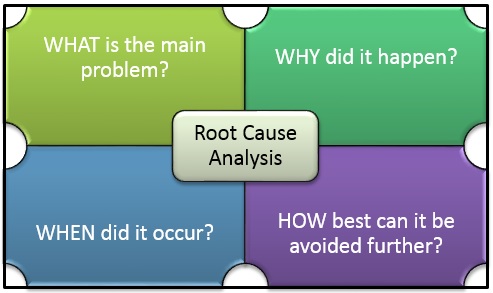It is a known fact that to solve any problem, you need to go to the root cause of it. This is what applies to the core, while Software Testing and the best approach is Root Cause Analysis. How best can it be done and what are its apparent benefits, is what reflects in this article.
Ideal software is the one with the least of bugs and the best of quality. It, is indeed, foolish to ask for a software with zero defects. What we can ensure is minimal possible defects and a right process to identify those defects and their causes. In the world of testing, one of the prime challenges lies in identifying WHY the issue has occurred in the software. A very popular and effective process – an answer to this challenge is the Root Cause Analysis (RCA) used while software testing. It is a mechanism of analyzing defects, to identify its root cause.
Root Cause Analysis is like a chain of events which go backward, right from the last possible action to the previous and so on, till you reach the start of the problem and the exact point at which it was introduced as a defect. This is called as reverse engineering. There are a few two major questions that we need to ask – WHAT, WHY, WHEN, HOW. With the assistance of these questions, we can dig into each phase of the software life cycle to exactly track the origin of the defect and the point at which it was injected into the system.
Root Cause Analysis in Software Testing – The Process
- The very first step is to identify WHAT is the main problem or issue. Till we don’t have that, it is not possible to move ahead and perform the root cause analysis.
- While software testing, the very next step is to analyse WHY this has happened and thereby, go through the most common factors that could play a major role in provoking this defect.
Possible Factors responsible for defect occurrence:
-
- Inadequate Requirements
- Lack of Unit testing
- Communication gap
- Negligence
- Incorrect Assumption
- Design Gaps
- Deployment issue
- Inappropriate Environment
- Ineffective Test case coverage
- Ineffective Test data
- Further to this comes the phase of analyzing WHEN did this defect occur, i.e., in which phase did it initiate. This information is quite useful when it comes to giving more focus to that particular phase in the SDLC. For e.g., if the issues are being initiated in the Requirements phase, more attention has to be paid in that stage so that further defects can be stopped. With diverse methodologies in software testing like formal reviews, walk through sessions and more, Root Cause Analysis can be proven useful to prevent the defects in the system based on past experience.
- Figure out HOW best we can reduce the defect as well as the likelihood that it will not happen again.
Key Benefits of Root Cause Analysis in Software Testing
- Analysis of near-misses
- Reinforcement of quality control
- Continuous improvement
- Early identification of risks
- Enhanced Project management
- Improvement in Performance Management
Recommended Solutions to perform Root Cause Analysis in Software Testing
- Failure Mode and Effects Analysis (FMEA)
This method derives the idea of Risk Analysis approach to identify points or areas where a system could fail.
- Impact Analysis
This is yet another useful method which provides the facility to analyze the positive & negative impact of the change on different areas of the system or application which can be affected.
- Kaizen or Continuous Improvement
Kaizen or CI provides significance to those in the organization who are able to identify the places for improvement. Based on the applied small changes or solutions, one can make the system better.
- Identification of Defect Injected / Detected phase
The Defect Injected Phase (the phase in which the defect was injected) and the Defect Detected Phased (the phase in which the defect was identified) are two important aspects to be identified for any ideal tester. Identification of the found defect and the rectified defect is known as Defect Age.
Request for a Free POC to test drive our Software Testing Services.






